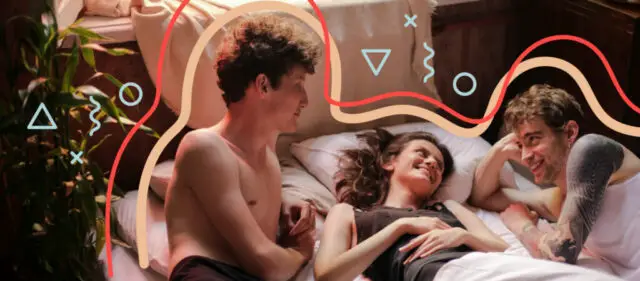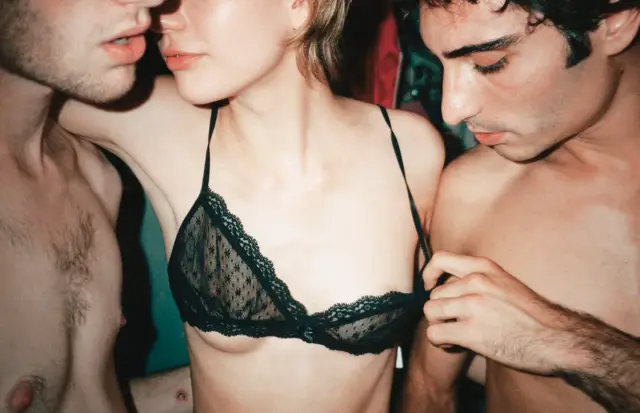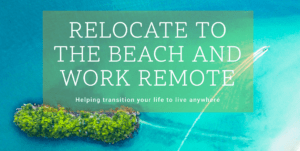Dedeker Winston has been in non-monogamous relationships for over a decade, but I’ve never seen such a deep interest in open relationships. The subject has traditionally been taboo in much of the world. In 2014, when Winston started the Multiamory podcast, she and her co-producers had to decide whether to use their real names on this show about ethical non-monogamy.
“At the time there were pretty much only one or two other podcasts that were dealing with this topic,” says the dating coach. “And the people who were producing and hosting those podcasts were using pseudonyms.”
But things have changed. Around 2016, Winston noticed a real “explosion of interest around non-monogamy,” about a year after she began working as a relationship counselor.
“That’s when I felt the biggest turning point. Suddenly, so many people on the internet were willing to talk about being non-monogamous,” she says, “and express the fact that they have an interest in these kinds of things.”
Sarah Levinson, a counselor at Creative Relating Psychology Psychotherapy in New York City who specializes in sexuality and relationship dynamics, has also noticed a growing interest in open relationships in the last decade. “It was much darker 10 years ago, and now it’s incredibly common” she says.

These testimonials, as well as some data, show a growing interest in consensual non-monogamous relationships, including open relationships. Experts say that many social and cultural factors have led to the wider adoption of non-traditional relationship styles, and the pandemic may even be playing a role. But while interest in open relationships may be on the rise, experts disagree on how widely accepted it may be, at least for now.
“Free passes” and swinger experiences
There are many ways to engage in non-monogamy, says Levinson. “It could be anything from living with multiple partners and sharing finances, or it could be supporting your partner to get once a year a free pass on a work conference trip to sleep with someone.”
Open relationships fall under the umbrella of non-monogamy, but many tend to differentiate between those types of arrangements and other types of non-monogamy, such as polyamory.
Polyamory often means engaging in multiple intimate partners, while open relationships are more associated with people having sex outside of their priority partner, but with their consent.
In other words, open relationships focus less on emotional connections with people outside of a primary relationship and more on sexual ones. For some, this means casual dating and “friends with benefits” relationships with people other than their primary partners.
For others, an open relationship just means that occasional “free pass” for a one-night stand or a brief affair. Another possibility is that the arrangement is more like swinger sex, having other partners as a couple, but not dating separately.
Winston also mentions open “don’t ask, don’t tell” relationships, where both partners allow the other to have sex with other people but don’t want to discuss those experiences together.
Other terms, such as monogamish, popularized several years ago by American sex and relationship columnist Dan Savage, may by definition overlap with some of these open relationship arrangements. Savage discussed his monogamous relationship on his podcast, in which he and his husband are committed to each other but have non-committed sex with other men.
People of all kinds engage in open relationships. Levinson says that in recent years she has seen “quite a diversity” in everything from those who participate in open relationships in her sessions, from economic resources to ethnicity.

However, she acknowledges that as a counselor working in New York, she may see a different sample than she might find in other, more conservative parts of the United States.
Among Winston’s clients—podcast listeners and website visitors—he found that many who are interested in or involved in open relationships tend to be relatively young, between 25 and 45 years old. And many identify as queer, bisexual, and/or pansexual.
However, he has worked with interested clients or practitioners of open relationships who are between the ages of 19 and 70. “The people who knock on my door run the gamut,” he says.
Curiosity
Dating app trends help highlight the increased interest in open relationships. On the one hand, there has been a rise of platforms particularly focused on non-monogamy, including open relationships, to satisfy growing curiosity.
But even the more traditional dating apps like OkCupid have seen a surge in interest in open relationships. “While the majority of people found on OkCupid are looking for monogamous relationships, in 2021 users searching for non-monogamous relationships increased by 7%,” a company representative said.
Among over 1 million OkCupid users who answered the question “Would you consider having an open relationship?” on the app, 31% said yes in 2022, compared to 29% in 2021 and 26% in 2020.
Additionally, 2022 data from dating app Hinge showed that one in five users would “consider” trying an open relationship, while one in 10 have already had one. Hinge’s relationship science director Logan Ury says there may be a pandemic effect: “It was the perfect opportunity to pause and think more about what we want.” Counselors and professionals, including Levinson and Winston, have also seen an uptick.
Winston says much of the recent interest she’s seen in open relationships is coming from millennials, who are “questioning the way they’ve been raised” in most cases to believe long-term monogamous marriage is the goal. end of intimate relationships. This may be due to a general trend toward an open mind, Levinson believes.
“Socially, we are all more open-minded to all kinds of identities that are less conventional… people are more willing to challenge social constructions in a general way,” he says.
This has opened the door for people to question their own desires as well. When you “keep choosing monogamy and it doesn’t work (?) you start to get curious about (if) there is another way.”
And for the curious, there are more resources than ever. Along with the “explosion of interest” in open relationships, Winston adds, there is an “explosion in content creators and people writing about it in the media… on apps, at community gatherings.”
This means that information about non-monogamy is widely accessible, not in “dusty old LiveJournals in the corners of the internet,” which is where Winston says he needed to look for information more than a decade ago.
More fantasy than reality?
Despite more people adopting non-monogamous arrangements and a growing visibility around open relationships, the general perception remains negative. “Research and public opinion polling suggest that attitudes toward consensual non-monogamy are mostly negative overall, although they appear to have trended more positively in recent years,” says Justin Lehmiller, a Kinsey Institute research fellow and presenter. of a podcast about sex and psychology. While those negative attitudes may not stop people from thinking about having open relationships, they may deter them from participating in them.
In her research on sexual fantasies, for example, Lehmiller found that “most people have fantasized about being non-monogamous in some way before, such as engaging in swinger sex, opening their relationship, or being polyamorous.” However, he adds, “relatively few practice it in real life.”
Although there is no post-pandemic data on how many people have such arrangements in their relationships, Canadian research from 2019 puts the figure at around 4%, and a similar figure emerged in a 2018 US study. Levinson believes this may be due in part to a deep-seated perception that open relationships are generally viewed as “unhealthy.”

Among his fellow therapists, Levinson has noted that many still view the “dyad” or “couple bubble” as the “only viable way to secure attachment,” he notes. She feels that these attitudes can “make people feel like this is a viable option for them.”
Religious beliefs can also discourage people from engaging in sexual and/or dating relationships with more than one person at a time, as can the cultural norms of certain communities.
Still, Winston sees people, particularly millennials and centennials, continuing to move away from the idea that one partner can meet all their needs (something that fosters the traditionally monogamous concept of marriage).
She points to more platonic friends deciding to live and parent together, as well as declining marriage rates, to suggest possible future social change in how people engage with one another. “People are branching out more to create the relationships that make the most sense for their lives,” she says.
While Levinson agrees there will be a continued rise in “creative relationship structures” for similar reasons, he doesn’t think it will become a global phenomenon. Too many cultures around the world present challenges for people hoping to open up their relationships, and taboo is still prevalent around the world.
OkCupid’s head of global communications, Michael Kaye, has a different opinion. “The behaviors we see among people we meet today have been around forever. But people are becoming more open and transparent about how they identify (and) what they want in a relationship. I think with each passing year, we become a little less critical of each other,” he says.

For those who have experienced shifts in consciousness and know that more peace, joy, and love awaits in a better living environment. A bold shared vision. A living community and hub for innovation. A sustainable ecosystem for living and working. A model for the new future.
